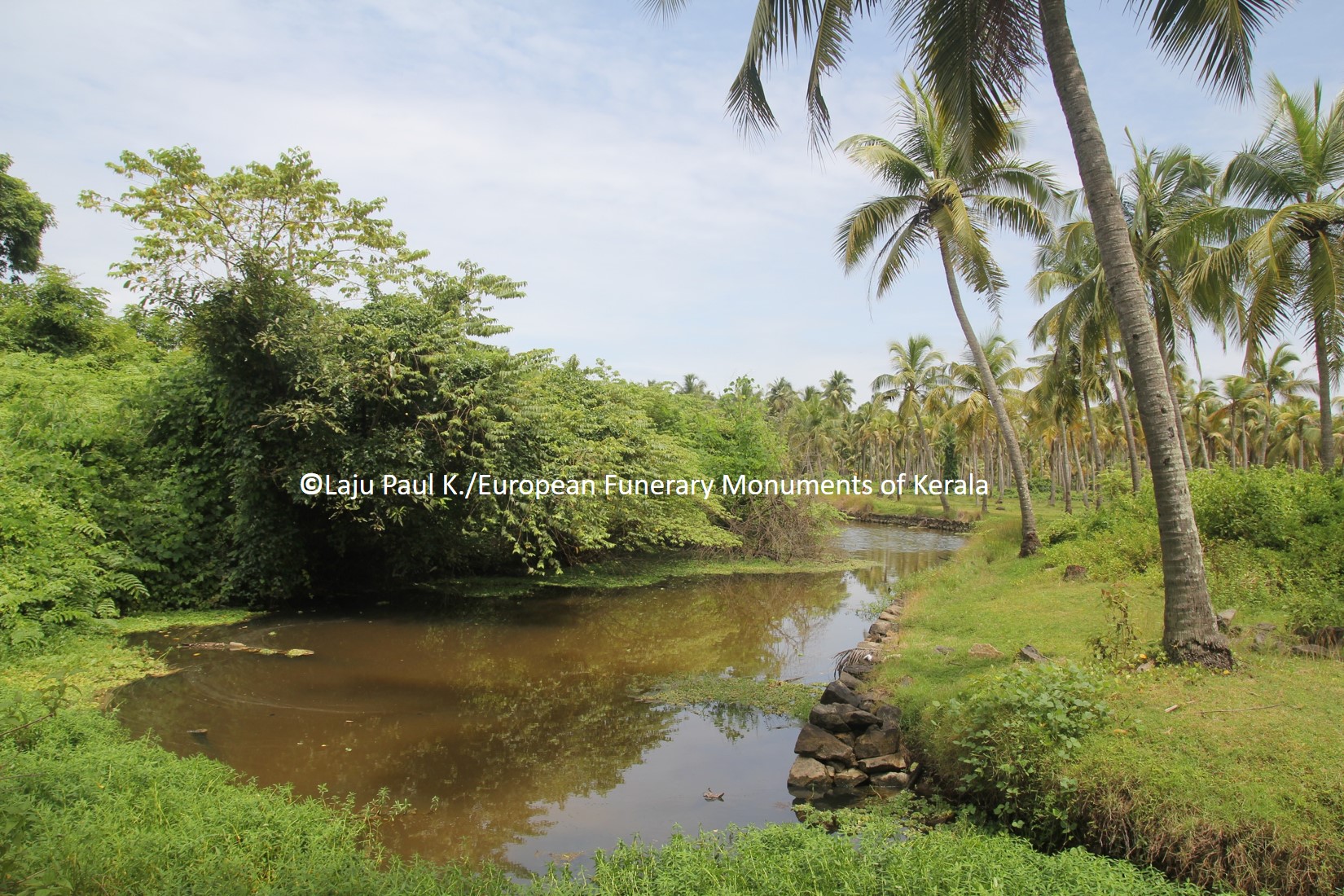Dutch Epitaph
Ter
gedagtenisse van den E. Wilhem Blasser in syn leeven Cappetyn Luytenant
en eerste commandant ter fortresse Wilhelmus tot Chettua overleeden den
2 February ao 1729.
English Translation
In memory of E Willem Blasser, in his lifetime captain lieutenant and first commander of the fortress Wilhelmus at Chettua, deceased on the 2 February 1729.
In 1714, the Dutch under the support of Cochin Raja set about the erection of a fort at Chettuva. In 22 January, 1715, Zamorin (Samoothiri) with the help of the British took control over the unfinished fort by surprise attack. The English even built a lodge in the fort complex afterwards. However, the Dutch recaptured the fort in 25 April, 1717 under the command of Sergeant-Major Hans Frederik Bergman. It was named Fort William and Captain-Lieutenant William (Wilhem) Blasser was the First Commandant thereof, died there on 2 February, 1729 and buried in the fort premises. After the Dutch, by the end of 18th century, the fort was controlled for a brief period by the Mysorean Army of Hyder Ali and his son Tipu Sultan; and they were followed by the British.
In the 1880s, the then Malabar Collector, William Logan observes Wilhem Blasser's grave lying at the 'Chetwai Public Bungalow' ('Malabar Manual', 1887, vol 1, p. 351). However, in 1905, British Civil Servant Julian James Cotton reports that the this slab was recovered from the site of the old fort of Chetwai by some Moplas (Muslims) who took it to their mosque, and that Logan had it removed to the Deputy Tahsildar's office, where it lies in the compound of that building ('List of Inscriptions on Tombs or Monuments in Madras', p. 264). Almost at the same period, Sir Charles Alexander Innes also attests the tombstone in Chavakkad Deputy Tahsildar's office ('Madras District Gazetteers', 1908, vol. 1, p. 450). A few years later, in 20 February, 1924, Rev. Henry Hosten visited the site and saw the tombstone. Hosten writes that the slab was brought to the "Sub-magistrate's court at Chowghat from the dilapidated fort of Chettuvai (Chetwye), 4 miles off, along the sea". We learn that Hosten even left a copy of the inscription and a translation with the authorities.
Today, 'Chettuva Fort' located some 8 km south of Chavakkad Municipality is a protected monument, but the site is virtually inaccessible due to thick vegetation and no remains are visible under the current neglected state. On the other hand, the tombstone still remain well preserved at the Chavakkad Taluk Office (former Deputy Tahsildar's Office), and we know that the transfer from Chettuva occurred more than a century ago. However, not many even know that the grave-marker exists, as its status is often quoted as lost or unknown. It remains a hidden gem that often goes unnoticed by many. Earlier, in 2020, I had uploaded an image of this gravestone in a lengthy post on 'Palayur Jews'-search for 'Wilhem Blasser' in the link here.
 Fort William or Chettuva Fort today-the ruins of the fort are under the thick vegetation on the left side of the moat
Fort William or Chettuva Fort today-the ruins of the fort are under the thick vegetation on the left side of the moat



No comments:
Post a Comment